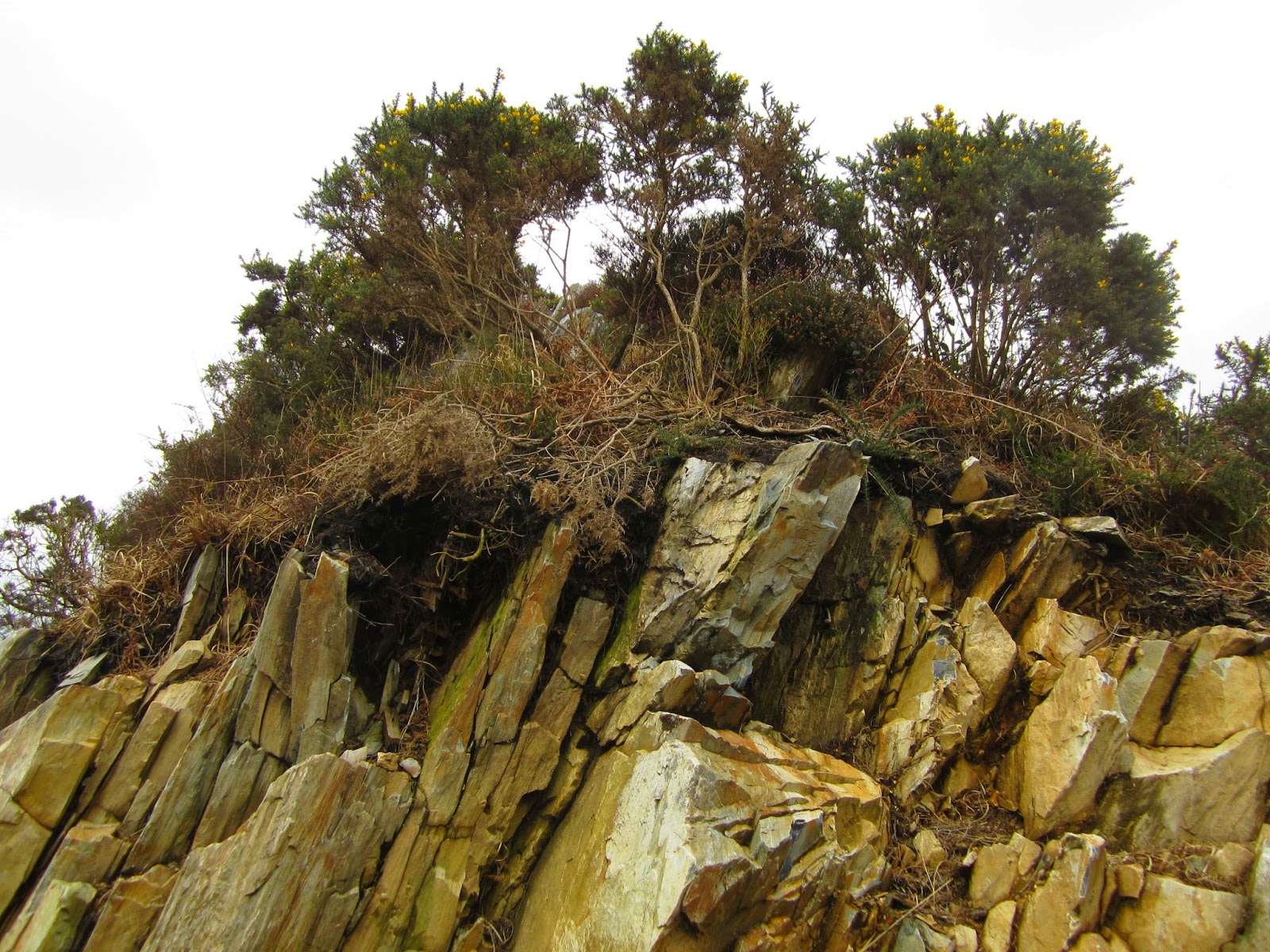Shrubberies have had a bad name since the heroic days of Monty Python and the Holy Grail. That's a pity, because they are indeed splendid things. We should enjoy them, and take them much more seriously.
We should remember that prior to 2011, when everybody started to get excited about the place, that Rhosyfelin was an innocuous and rather pretty rocky crag in the Brynberian valley. Before the archaeologists arrived and started systematically to expose the main fracture plane on the north flank of the ridge, it was notable above all for the rather attractive jumble of rocks on the summit and flanks of the ridge, and the interesting mixture of heath vegetation (dominated by bracken, gorse, heather and brambles) and scrubby shrubs and trees -- including hazel, willow, alder, ash and oak.
Since the Devensian ice retreated from this valley around 20,000 years ago, we have had a few thousand years of tundra climate (with frost processes dominating) from c 19,000 yrs BP - 15,000 yrs BP; then a couple of thousand years of scrubby woodland (15,000 yrs BP - 13,000 yrs BP); then another shorter phase of tundra conditions around 13,000 yrs BP - 10,000 yrs BP (around the phases normally referred to as the Older Dryas and Younger Dryas); and finally 10,000 years of woodlands of various types, right up to the present day.
So there have been two essential types of processes operating here and contributing to the breakdown of the ridge and the accumulation of great banks of scree and fallen rocks: up to 7,000 years of periglacial / tundra conditions with frost processes dominating, and around 13,000 years of shrubbery.
What happens when there is a shrubbery on this site? Well, it's pretty obvious, and one just has to look at the site today to realise that root expansion, shallow-rooted trees rocking around in high winds, soil and rotted vegatation accumulation in cracks and along fracture planes, and moisture retention because of thicknesses of moss and humus in hollows and crevices. Weathering from humic acid penetration, constant wetting and drying in many places, freeze-thaw processes every winter (including ice expansion) with every freezing and thawing cycle, combined with the actual erosive capacity of roots in forcing blocks away from their places of origin and causing them to keel over or crash down to the foot of the slope.
The conclusion is inescapable: the biological processes associated with the Rhosyfelin Shrubbery, over a timescale of many thousands of years, have done infinitely more to create the character of this site, and to dislodge all those rocks, than Neolithic quarrymen ever did........

.jpg)





9 comments:
Think you are right Brian.
Of course the site would have looked quite spectacular, and still does. I can well imagine people in the neolithic treating it as a special place and would not be at all surprised if they left traces.
Maybe our excellent forefathers ran gardening courses here? They probably came and camped for a weekend, and learned all about flowering shrubs......
Seriously though, it was certainly a perfect camp site for hunters, and I suspect the radiocarbon dates may show intermittent camping over quite a long period of time.
Perhaps they grew the timber for the raised circular wooden platform which topped off Stonehenge?!
Via The Guardian: "Circular thinking: Stonehenge's origin is subject of new theory"
http://www.theguardian.com/science/2015/mar/15/circular-thinking-stonehenges-origin-is-subject-to-new-theory
Thanks Helen -- Hadn't seen that in the Guardian. Will give it a mention....
Chris writes,
"I can well imagine people in the neolithic treating it [Rhosyfelin] as a special place"
Is that why they purportedly tore it up by quarrying it?
Kostas
Kostas,
Perhaps they took a stone or two :)
Perhaps we should call it a rockery, not a shrubbery......
I visited Rhosyfelin recently, the excavations were partially flooded by heavy rain. It looked quite serene ,almost like a rockery with a pond . One thing struck me though, if it did not LOOK like a quarry before MPP started it certainly LOOKS LIKE and abandoned quarry now . Anyone seeing the site for the first time could well accept the theory purely on face value...
Precisely. As indicated in a number of posts, we are looking at an archaeological artifice. In the real world, it never did look anything like this -- but I don't expect we will see any of the diggers accepting this. Too inconvenient.
Post a Comment